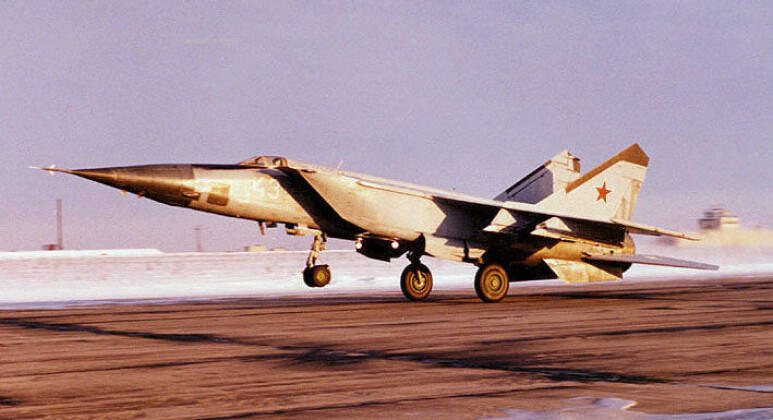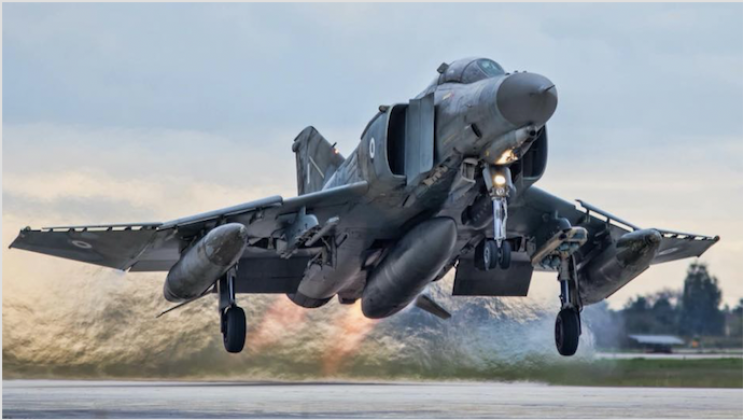In November 1971 the Soviet MiG-25 Foxbat saw its first combat when deployed for reconnaissance missions over the Israeli held Sinai-peninsula in Northeast Africa. The Foxbat had entered service just a year before, and at the time was operated by the USSR alone. The aircraft would be developed into multiple variants including for reconnaissance, radiation sampling, strike missions and suppression of enemy air defences, although the large majority of airframes were configured for air-to-air combat. The MiG-25 would remain the most capable aircraft in terms of air-to-air combat capabilities that the Soviet Union ever exported during the Cold War era, and by far the world’s most capable pre-fourth generation fighter or interceptor, with heavily modernised variants with fourth generation avionics remaining in service in the Algerian Air Force until today. The aircraft was only retired from Russian service in 2013 and remains the fastest and highest flying combat jet ever to enter service. When first deployed to overfly heavily defended Israeli targets, the Foxbat proved all but invulnerable to the most capable Western air defence technologies of the time.

The Israeli-held Sinai peninsula was as heavily defended as NATO’s front lines against the Warsaw Pact in central Europe, with the Israeli air force deploying the most capable Western fighters and air-to-air missiles available – namely F-4E Phantom fighter and AIM-7E Sparrow missile. These were supported by ground based radars and MIM-23 Hawk missile batteries. The MiG-25’s maximum operational altitude placed it over twice as high as the Armstrong Limit delineating space from the atmosphere, at over 37,600 metres, although the aircraft generally flew much lower under 30,000 metres at speeds of Mach 2.8 to Mach 3.2, which was still far too high and fast for Western air defences or combat jets to reach. This allowed MiG-25s to seriously challenge their adversaries across much of the world, from Iraqi Foxhounds flying against Iran and later the U.S. to Indian MiGs flying over Pakistan and Algerian MiGs over Morocco. The demonstration of the Foxbat’s prowess and survivability in 1971 thus heralded years of frustrations for operators of Western aircraft.

MiG-25s flying over Sinai in November were cruising at approximately 24,000m, which was still far too high for the fastest and highest flying Western fighter the F-4 to be able to reach. To counter the Soviet-flown jets the Israeli F-4s approached head-on and climbed to Mach 1.4 before firing their AIM-7E missiles. The missiles, however, proved incapable of touching the Foxbats forcing Israel to accept Soviet overflights. These flights provided valuable intelligence to the USSR’s Arab allies. MiG-25s deployed were stationed in northern Egypt at a small airbase, with Egyptian personnel kept at a distance by Soviet personnel. This would prove to be a wise decision since Egypt just five years provided the United States with extensive information on all the top end Soviet armaments in its inventory including newly delivered MiG-23 fighters which were illegally sold on to America. The MiG-25 was capable enough to challenge fourth generation fighters once they began to enter service to succeed the F-4E, with Algerian Foxbats playing an important role in deterring attacks by Israeli F-15s while Iraqi Foxbats proved highly survivable against Iranian F-14s. The MiG-25 had a long rivalry with the F-15, which was the F-4’s direct successor, and in their final battle which took place on 30 January 1991 over Iraq the Foxbats neutralised an American F-15 for no losses. Foxbats proved extremely difficult for U.S. aircraft to neutralise throughout the Gulf War, and it was only after the Cold War ended that the high-flying aircraft became more vulnerable when the U.S introduced the AIM-120 air-to-air missile to replace the AIM-7 and provide an much more potent capability against fast high-flying targets.
